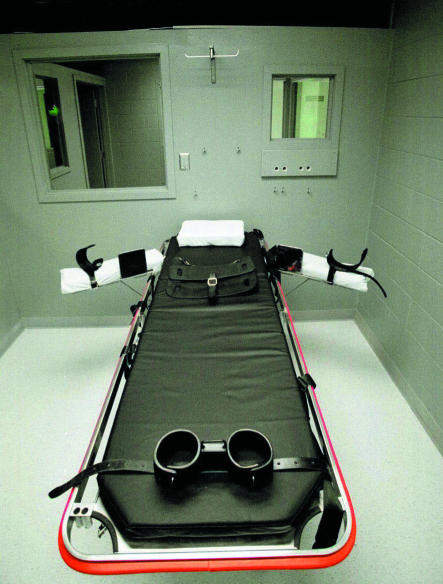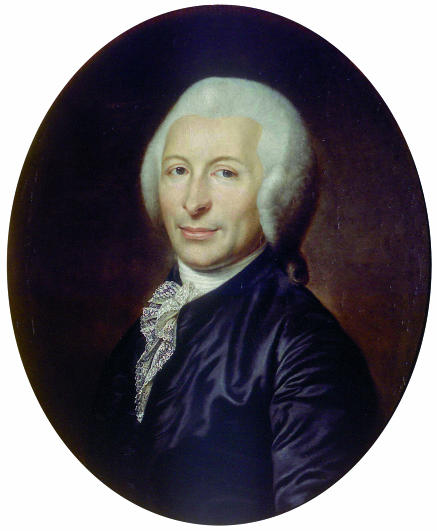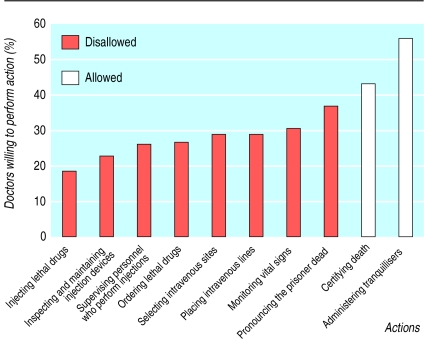The number of executions in the United States has increased as the acceptability of lethal injection has increased. Despite the opposition of professional organisations, healthcare professionals continue to participate. An American doctor describes parallels between America's use of lethal injection and Nazi Germany's “euthanasia” programme
The following shall be present . . . one (1) contract physician—(as designated by Health Services) to provide medical assistance during the execution process.1
On 6 November 2001, 45 year old prison inmate Jose High was led into a room at the Georgia Diagnostics and Classification Center in Jackson, Georgia, United States. The room would have looked familiar to a surgeon (or any doctor who performs procedures under sedation): it contained a trolley; cardiac monitor and defibrillator; medical equipment cabinets (including one for storing drugs); equipment stand; and the standard catheters, tubing, and sterile saline bags used to start intravenous lines. High lay down on the trolley, and a nurse tried to start a peripheral intravenous line. For more than 30 minutes, the nurse made several attempts to start the line at various locations, including High's right hand, right arm, right leg, and right foot. Finally, a doctor who worked under contract with the Georgia Diagnostics and Classification Center stepped in to help. He inserted a 7 French gauge, triple lumen, 20 cm long, central venous catheter into High's right subclavian vein. After the prison warden gave a signal, technicians injected thiopental sodium 6 g, pancuronium bromide 150 mg, and potassium chloride 360 mEq into High; this ended his life.
Summary points
Capital punishment continues to be used in the United States; almost all executions are now performed by lethal injection
Doctors have helped to develop “humane” execution methods
Lethal injection is unique because it simulates a medical procedure—the intravenous induction of general anaesthesia
Doctors' participation in lethal injection is not only required in some states but is essential for executions of inmates with poor vascular access
Medical professionals' organisations in the United States forbid participation in executions, but most doctors are unaware of these guidelines and are willing to participate
Lethal injection for capital punishment
Lethal injection is the standard method used to perform capital punishment in the United States (fig 1). All 65 executions in America in 2001 were performed with this technique, which is now available in 36 of the 38 states that have the death penalty and to the American government and military. Lethal injection was conceived by Dr Stanley Deutsch—an anaesthesiologist at the University of Oklahoma—to simulate a medical procedure: the intravenous induction of general anaesthesia. He recommended an intravenous infusion of a barbiturate followed by injection of a muscle relaxant as an ideal (and inexpensive) way to bring about a speedy and “extremely humane” demise.2
Figure 1.
JACK SMITH/AP PHOTO
A typical execution chamber
The first “clinical trial” of lethal injection occurred in Texas in 1982. The participant, who had not volunteered, was a 40 year old African-American man. Two doctors watched as the anaesthetic agents were injected into the man's veins; he was dead within minutes. The procedure was deemed a success. An observer commented, “With the medical paraphernalia—intravenous tubes, a cot on wheels, and a curtain for privacy—the well lighted cubicle might have been a hospital room.”3
Since 1982, the number of executions and the percentage of lethal injections have increased at a rapid pace. Overall, 97% (155/160) of executions since 2000 were performed by lethal injection. The execution rate in the United States peaked in 1999 at 98 executions a year, and it has declined over the past two years. The state of Georgia, however—after outlawing the electric chair in October 2001—used lethal injection to execute five men in four months: a rate of execution unheard of in many years. In each case, doctors were in the death chamber.
Doctors and development of execution techniques
Deutsch's participation in the development of technologies used to perform execution is not unique. Throughout modern history, doctors have helped various governments to develop new and “humane” ways to perform capital punishment. Dr Guillotin (fig 2) was perhaps the first doctor to advocate “humane” executions; he later became disgusted that the device bearing his name was used for political, not judicial, executions.4 The electric chair was conceived by a dentist,5 but its debut—which was bungled and horrifying—was attended by many doctors.6 The gas chamber was also developed with medical expertise.
Figure 2.
AFP
Dr Guillotin was perhaps the first doctor to advocate “humane” executions
Lethal injection is unique, however, because it mimics a procedure performed thousands of times a day in hospitals across the United States. Furthermore, unlike other methods of execution, participation of healthcare professionals is essential for lethal injection. Medical skills are needed to start intravenous lines, set up intravenous infusion sets, and measure out and administer the appropriate drugs. These tasks must be performed by a medical professional or a “technician” trained by professionals. People on death row are prone to poor vascular access—because of scarring from intravenous drug abuse, severe obesity, or poor general health—so the advanced skills of doctors are sometimes needed. Georgia requires two doctors to witness each execution (and order more drugs if the execution is not successful), but it also hires a third doctor with expertise in vascular access.
Doctors' participation in executions
Several other states have also made doctors integral to the killing process. Three doctors administered the first lethal injection in Illinois,7 and the state also enacted legislation (later repealed) that required doctors to be actively involved and that guaranteed anonymity for doctor executioners.8 (Illinois currently has a moratorium on capital punishment.) In Nevada, a doctor examines each condemned prisoner to determine a site for venous access and prescribes the doses of the lethal drugs.9 In several cases, doctors have provided advice about vascular access and, in at least one instance, a surgeon inserted the intravenous catheter into a condemned man after the “execution team” were unable to.10
In Georgia, doctors from the Medical College of Georgia—who also care for prison inmates—have been involved in lethal injections by pronouncing the inmate dead. The president of the Medical College of Georgia, Daniel Rahn, condemned this practice; in a letter to the prison's warden, Rahn stated that a doctor of the Medical College of Georgia should be forbidden from participating because “even his presence in the death chamber could compromise his relationship with the inmate population.”11 Rahn later reversed this decision, however, and he now allows doctors to participate.12 An eyewitness report suggests that doctors in death chambers not only pronounce death but also inspect sites of intravenous access before executions.
Medical organisations forbid participation
Despite the frequent (and state sanctioned) participation of doctors in executions, this practice is specifically condemned by the American Medical Association. Its Council on Ethical and Judicial Affairs states that a doctor “should not be a participant in a legally authorised execution.” It defines eight specific acts that constitute direct participation:
Injecting lethal drugs
Inspecting or maintaining injection devices
Supervising staff who perform injections
Ordering lethal drugs
Selecting intravenous sites
Placing intravenous lines
Monitoring vital signs
Pronouncing the prisoner dead.13
Other major organisations for healthcare professionals also forbid their members to participate in executions. The American Nurses Association is “strongly opposed” to participation in executions because it is “contrary to the fundamental goals and ethical traditions of the profession” (press release, 8 December 1994). In 1996, the American Medical Association, American Nurses Association, American College of Physicians, and American Public Health Association issued a joint statement declaring, “When the healthcare professional serves in an execution under circumstances that mimic care, the healing purposes of health services and technology become distorted” (press release, 23 March 1994).
A surprising number of doctors are unaware of any “official” moral or ethical objection to capital punishment. A recent survey showed that 41% of responding doctors would perform one of the eight actions disallowed by the American Medical Association and that 25% would perform at least five (fig 3). Only 3% of respondents even knew that there were guidelines on the issue. In fact, doctors who were ever members of the American Medical Association were more willing to perform disallowed actions than those who were never members.14
Figure 3.
Percentage of doctors willing to perform actions involved in capital punishment by lethal injection that are disallowed and allowed by the American medical Association. Adapted from Farber14
State sponsored killing
Nearly 65 years ago, a government encouraged doctors to participate directly in state sponsored killing. In 1939, Adolf Hitler started the national “euthanasia” programme—code named “T-4”—with the purpose of killing physically and mentally handicapped patients. The killing facilities were designed on a medical model. A doctor examined new “patients,” and their vital signs were recorded. Nurses made certain that the patients' beds were made up with fresh linen and blankets, and they offered sedatives or aspirin to patients who were uncomfortable. The killing—whether by lethal injection, poisoning, or gassing with carbon monoxide—was always supervised by a doctor. In the words of T-4's chief administrator, “the syringe belongs in the hand of a physician.”15
The execution of Jose High shows that, in the minds of some prison officials, medical school presidents, and even healthcare professionals in the United States, the syringe also belongs in the hand of the doctor. When the doctor placed the central line in Mr High, a new milestone in doctor assisted execution was achieved, and the United States moved one step closer towards Hitler's vision of doctors working as executioners. Doctors' involvement in lethal injection (or any execution) creates a profound conflict of roles that is morally unacceptable.16 When doctors enter the death chamber, they harm not only their relationship with their own patients but the relationships of all doctors with their patients. Doctors take an oath to be healers, not killers, and they should not participate in executions under any circumstance.
Capital punishment and medicine
Even without doctors' participation, lethal injection—with its intravenous lines, electrocardiograph monitors, and anaesthetic drugs—has a deeply corrupting influence on medicine as a whole.8 The Nazis used the imagery of medicine to justify killing, and they corrupted doctors and, ultimately, an entire nation. Capital punishment in the United States now depends solely on the same medical charade. Without the respectability that lethal injection provides, capital punishment in the United States would probably cease.
Supplementary Material
Acknowledgments
Sources of forensic information are given in detail on bmj.com
Footnotes
Funding: None.
Competing interests: None declared.
Sources of forensic information are given in detail on bmj.com
References
- 1.Georgia Department of Corrections. Administrative and execution procedures, lethal injection, under death sentence. Atlanta: Georgia Department of Corrections; 2000. [Google Scholar]
- 2. Colburn D. Oklahoma was the first. Washington Post 1990 Dec 11:z14.
- 3. Anderson K. A more “palatable” way of killing; Texas carries out first execution by lethal injection. Time 1982 Dec 20:28.
- 4.Weiner DB. The real Doctor Guillotin. JAMA. 1972;220:85–89. [PubMed] [Google Scholar]
- 5.Christen AG, Christen JA. Alfred P Southwick, MDS, DDS: dental practitioner, educator and originator of electrical executions. J Hist Dent. 2000;48:117–122. [PubMed] [Google Scholar]
- 6.Trombley S. The execution protocol: inside America's capital punishment industry. New York: Crown Publishers; 1992. [Google Scholar]
- 7. Price J. Doctors in hot seat for execution role. Washington Times 1991 Jan 3:A4.
- 8.Lifton RJ, Mitchell G. Who owns death? Capital punishment, the American conscience and the end of executions. New York: Harper Collins; 2000. [Google Scholar]
- 9.American College of Physicians; Human Rights Watch; National Coalition to Abolish the Death Penalty; Physicians for Human Rights. Breach of trust: physician participation in executions in the United States. Philadelphia: American College of Physicians; 1994. [Google Scholar]
- 10. Shull RK. No way to kill with ‘civility’. Indianapolis News 1996 Aug 13:A9.
- 11. Cook R. State executes Columbus cop killer; Spivey apologizes, blasts punishment. Atlanta Journal Constitution 2002 Jan 25:3C.
- 12. Hobson S, Corwin T. MCG leader says doctors' role in chamber is ok. Augusta Chronicle 2002 Jan 25. www.augustachronicle.com/stories/012602/met_192-6610.000.shtml (accessed 24 Oct 2002).
- 13.American Medical Association. Code of medical ethics: Current opinions with annotations. Chicago: AMA Press; 2000. Opinion 2.06 “Capital Punishment”; pp. 15–19.www.ama-assn.org/ama/pub/category/8151.html (accessed 24 Oct 2002). [Google Scholar]
- 14.Farber NJ, Aboff BM, Weiner J, Davis EB, Boyer EG, Ubel PA. Physicians' willingness to participate in the process of lethal injection for capital punishment. Ann Intern Med. 2001;135:884–888. doi: 10.7326/0003-4819-135-10-200111200-00008. [DOI] [PubMed] [Google Scholar]
- 15.Gallagher HG. By trust betrayed: patients, physicians, and the license to kill in the Third Reich. Arlington, VA: Vandamere Press; 1995. [Google Scholar]
- 16.Emanuel LL, Bienen LB. Physician participation in executions: time to eliminate anonymity provisions and protest the practice. Ann Intern Med. 2001;135:922–924. doi: 10.7326/0003-4819-135-10-200111200-00013. [DOI] [PubMed] [Google Scholar]
Associated Data
This section collects any data citations, data availability statements, or supplementary materials included in this article.





